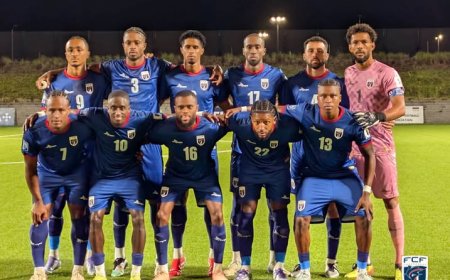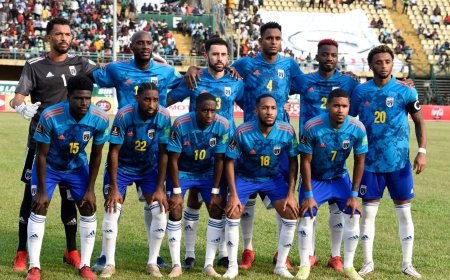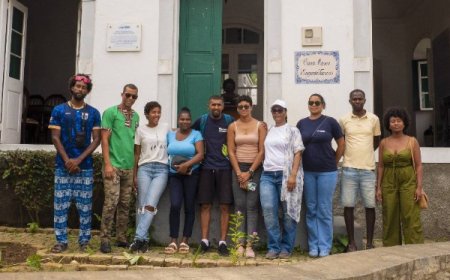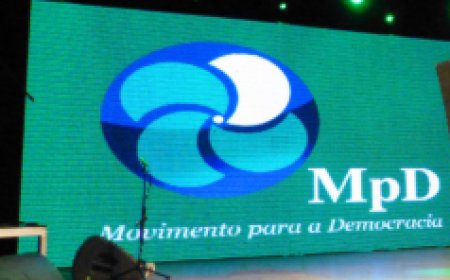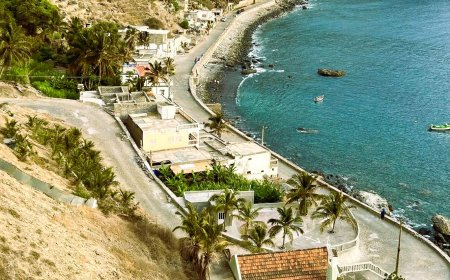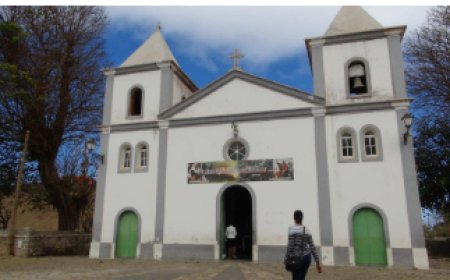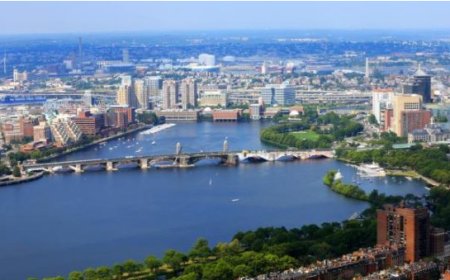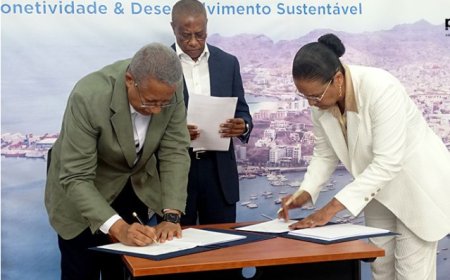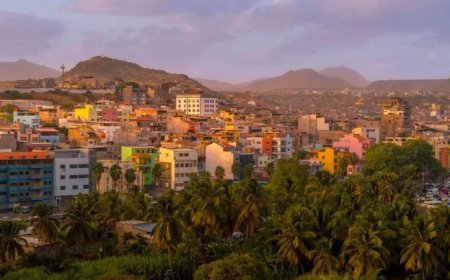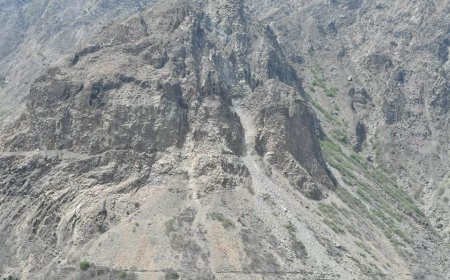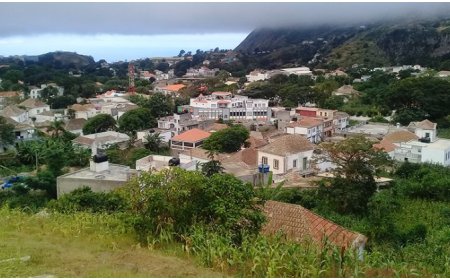Seafront: the unloved son - Alvaro Apolo Pereira
The country's coastline is increasingly threatened, due to the unsustainable human activities carried out there, causing serious deficiencies in its organization and its visual aspect due to the lack of harmonious planning, it is not pleasant and on the contrary that it seems totally divorced from the sea, as a resource invaluable. It should be noted that around 80% of the Cape Verdean population is concentrated in coastal areas and that the biggest economic investments, namely ports, hotels and industries, are located in coastal areas.

The country's coastline is increasingly threatened, due to the unsustainable human activities carried out there, causing serious deficiencies in its organization and its visual aspect due to the lack of harmonious planning, it is not pleasant and on the contrary that it seems totally divorced from the sea, as a resource invaluable. It should be noted that around 80% of the Cape Verdean population is concentrated in coastal areas and that the biggest economic investments, namely ports, hotels and industries, are located in coastal areas.
The world's coastline, throughout the process of civilization, underwent dynamics in terms of its use and occupation, due to intense economic activities and population concentration.
Due to its intensive use over the centuries, the resulting benefits for health, the need to preserve this territory for national defense, and its potential for fishing, led to the creation, in many countries, of a safeguard and classification as maritime public domain. Proximity to the sea makes coastal spaces an attractive and unique strategic territory, involving economic, socio-cultural aspects, and also for the allocation of equipment and infrastructure that are fundamental to the economy.
Between the city and the sea, throughout the process of urban growth, a relationship of continuous exchanges was established. One method of city expansion was then centered on gaining large territories on the coast. On the other hand, the emergence of a real estate sector willing to take advantage of the “ seaside ” city encouraged the development of the city compressed between the beaches and hills. In addition to these two aspects, the beach means work and income for an important part of the population.
Thus, the high dynamics that occurred in this strip of the coastal zone is associated with both natural and anthropic processes that accelerate and enhance the effects of erosion, giving the shoreline peculiarities that require permanent efforts to maintain its dynamic balance.
Seafront while , Maritime Public Domain (DPM), is a concept of Portuguese law, established in 1864, which determines that the strip of land in the coastal zone (banks, beaches, etc.) is inalienable property of the State, so that private (people, companies, etc.) can only have the right to use or exploit that area, and never its full ownership .
To all those who manage to documentally prove that they are the legitimate heirs/owners of a lot in this area before 1864, the State recognizes the property, but this does not exempt, or exclude, compliance with the rules that apply to the rest of the Public Domain Maritime.
Cape Verde's seafront is one of the country's main assets, constituting a key element in the development process of the islands, as beach tourism, maritime transport and fishing are pointed out as the archipelago's development engines. The concept is legislated through Law nº 44/VI/2004, of 12-07, which approved the regime of assets in the State's maritime domain, comprising beaches and land on the coasts, coves, bays contiguous to the line of maximum high tide. in a strip of 80 meters wide.
Cape Verde, as an island country, made up of islands, has a diversified coastline geomorphology that naturally gives it a high degree of vulnerability to the extreme weather events that occur, above all, in the low coastal areas of the coast where the island is located. coastline and, which increase coastal erosion.
In this important strip of territory, sensitive ecosystems often cohabit alongside construction concessions without the existence of plans and ordering of the coastline, jeopardizing the existing balances.
On the other hand, there is a continuous growth of tourism along the coastline, with an absence of a planning process, which takes into account the characteristics and conditions mentioned above.
The country's coastline is increasingly threatened, due to the unsustainable human activities carried out there, causing serious deficiencies in its organization and its visual aspect due to the lack of harmonious planning, it is not pleasant and on the contrary that it seems totally divorced from the sea, as a resource invaluable. It should be noted that around 80% of the Cape Verdean population is concentrated in coastal areas and that the biggest economic investments, namely ports, hotels and industries, are located in coastal areas.
This growth has led to excessive exploitation of aggregates in this important and sensitive area of the territory, with all the resulting environmental and landscape inconveniences. Often, regulations and conservation actions in protected areas along the coast turn out to be ineffective instruments, given the perception of impunity resulting from non-compliance with these regulations and insufficient supervision.
The islands of Cape Verde make up ten coastal realities, with different specificities, according to the morphology of each island. The seafront is a strip of fragile coastal territory, rich for its biodiversity, subject to a special regime, and to great anthropogenic pressures. The former Maritime and Port Agency (AMP), and now the DGEM (General Directorate of the Maritime Economy), occupies a prominent place in the set of institutions, with a focus on the seafront, with, however, a great overlap of competences and lack of articulation between the same, which facilitates the negative impact of infrastructure on this fringe of territory.
More than disarticulation and overlapping of competences, there is an urgent need to create a framework that defines the roles of each one. Let's see, for example, what happens with the allocation of concessions in the DPM fringe. The former AMP often issued concessions without proper articulation with the institutions that have jurisdiction in matters of planning, in a clear attitude that it was deciding on a fringe of “ its territory ”. On the other hand, the municipalities often licensed construction without having obtained the prior opinion of the former AMP or the Environment.
In fact, there are countless subdivisions and constructions in this strip, licensed or not, with and without consultation with the guardianship, which have negative visual impacts and impede free movement and access to the beaches. There are urban agglomerations in excessive proximity to the coast, which have felt the effects of high tides or swells when tropical storms pass through the Atlantic.
Alongside the residential occupation, there is the presence of industrial installations, implanted both in the public domain and in a wider range. In many cases they discharge untreated wastewater directly into the sea, despite the fact that the General Directorate for the Environment considers that pollution of coastal areas is not yet a priority problem.
The construction of tourist resorts constitutes one of the greatest threats to sea turtles in the country, evidence corroborated by the Associação Ambientalista Natura 2000. Coastal tourist development has increased the level of threat to the animals, as access to beaches is increasingly easy.
The extraction of aggregates, particularly sand, is one of the most sensitive and serious environmental problems on the Cape Verde coastline.
Licensed extraction is not always supervised and, often, companies take advantage of loopholes in the law or contracts (as a rule, depth and extension are not defined). Many companies do not comply with the norms and legal provisions imposed during the various phases of the exploration process, including the environmental obligations of recovering the exploration areas.
On the other hand, coastal erosion can have several consequences, among them, the reduction in the width of the sand strip (beach), loss and imbalance of natural habitats, increase in the frequency of floods due to storm surges, increase in saline intrusion in the coastal aquifer , destruction of structures built by man and loss of landscape value, consequently, of the tourist potential of a region.
Since Praia is the capital of the country, and the country's largest development pole, with the highest concentration of population and infrastructure, and an extensive seafront, it was assumed that the conditions were in place for a harmonious ordering of its territory, in particular the seafront and thus boost tourism.
Ordinance 10117 of September 18, 1971, included in the area of the city of Praia the land of the 80-meter seaside strip bordering it from the pier of S. Januário to the Port of Palmarejo, with the main objective of” promote the development of the Beach and encourage construction”.
Already in 1965, Ordinance No. 7229, of March 6, had done the same for the areas of the City of Mindelo and the village of Baía das Gatas, on the Island of S. Vicente.
The 1971 ordinance further confused who is who in the management of Praia's seafront, taking into account that land integrated in the 80-meter seaside strip is disaffected from the public domain and is now classified as land included in the Praia City and therefore belonging to the Municipality. The aforementioned inclusion made the lands from the public maritime domain of the State to the private domain of the Municipality of Praia, at the same time. The aforementioned law should have expressly regulated the situation of the land in the 80-metre seaside strip integrated in 1971 in the Cidade da Praia area, and, in 1965, in the Cidade do Mindelo area and in the area of the village of Baía das Gatas.
The municipality of Praia considers that the construction license is still current, often without prior hearing of the guardianship of the maritime public domain, and without respecting the safeguard regimes, which could only be guaranteed by planning plans for the coastline. It is urgent to clarify the effectiveness of this ordinance with the Constitutional Court and reallocate this strip of territory to the State, avoiding the proliferation of constructions on the seafront of Praia and often without going through the licensing of the maritime authority.
In Cape Verde, the situation is still worrying, given the non-regulation of the maritime public domain law, lack of definition of the supervisory body and a coherent model of governance, among others. There is still a need to adapt human dynamics to current and future coastal dynamics, which will only be possible through a great effort, shared by public institutions. Regarding concessions, Law No. 44/VI/2004 does not define an occupation quota for the maritime public domain (DPM). From the visit to some stretches of the coast of Boa Vista and even Santiago, it is clear that concessions are awarded on a case-by-case basis because of the way they are implanted on the ground, with areas where there is an almost exaggerated agglomeration of buildings. In our view, the seafront is tending to lose its maritime public domain character. On the other hand, it is noted that the shore is analyzed in an abstract way and all this diverse legislation treats this territory homogeneously, not requiring an analysis and typification of the different soil regimes in the same strip.
On the other hand, the Maritime Police appears to be one of the pillar services for inspection of the maritime and port sector or areas of maritime jurisdiction, and on the coastline in particular. Legislative Decree nº 6/2005, of November 14th, which creates the National Police in its Articles 8º, paragraph c) and 19º nº1, integrates the Maritime Police with all its competences, rights and privileges foreseen in the previous laws. However, with its integration into the PN, it lost autonomy, still suffering from an enormous lack of means to fully exercise its functions.
An analysis of the tutelary regime of the seafront was carried out and this has been transferred from the IMP to the AMP, and with its extinction and again with the recreation of the IMP, but now without the management of the seafront that passed since 2018 to the DGEM. An authentic “dance” of guardianships and a kind of unloved son. As a result, there continues to be management from a reductive perspective, only centered on the authorization of concessions, on a case-by-case basis and not framed in waterfront planning.
The desired clarification of the ownership of constructions along the seafront should be anticipated with the registration on all the islands.
To deepen the concept of seafront as DPM, it seems pertinent to focus on two elements. First, its consistency and its meaning in people's imagination. The royal decree of D. Luís, in 1864, which introduces the concept, intended to safeguard the nation's defense against possible invasions by sea, as well as fishing activities, at a time when urban occupation of the coast was scarce. With the passage of time and in view of the anthropogenic pressure along the coast, can we question whether the servitude with the current limits continues to make sense? All the sense.!
The public maritime domain does not seem to be frozen in time, mainly due to sea level rise and coastal erosion. In several countries, the question arises of the future of infrastructure currently affected by higher tides.
In view of the above and not only to safeguard environmental values, historical value, and as a corridor for access to defense, fishing resources, protection of natural resources and biodiversity, along with guaranteeing the safety of riverside populations, all in conjunction with economic promotion, we think it still makes sense to keep the seafront as an easement. The new approach should place the focus on a system for safeguarding the existing resources and those to be preserved within the same and reinforcing the aspect of protecting the environmental values and services it offers, whether to condition and supervise the types of use, implement hydraulic works or to public fruition and not so much the issue of ownership.
We recommend, among others, the creation of a Steering Committee with the following composition: INGT technicians; DGEM, Environment; IMP; Local authority where the applicant's claim is located and a member of civil society. The role would be to jointly analyze requests for land concessions.
It is urgent to clarify the possible revocation of ordinances 10117 of 1971 and 7229 of 1965, which delegates the management of the waterfronts of the cities of Praia and Mindelo to the respective councils. Indeed, the Constitution states that the seafront belongs to the State. On the other hand, the land law in its article 91 revokes these legal provisions. Even so, the opinion of jurists on the effectiveness of the same ordinances is controversial. It is also recommended that law 44/VI/2004 be revised, which was never regulated, and the creation of a National Council for the Seafront and that finally notaries and/or conservators should alert citizens about the possible nullity ( even if partial) of such transactions and consequent registrations, given the difficulty in obtaining all the evidence regarding the ownership of the land.
Praia, May 2023










